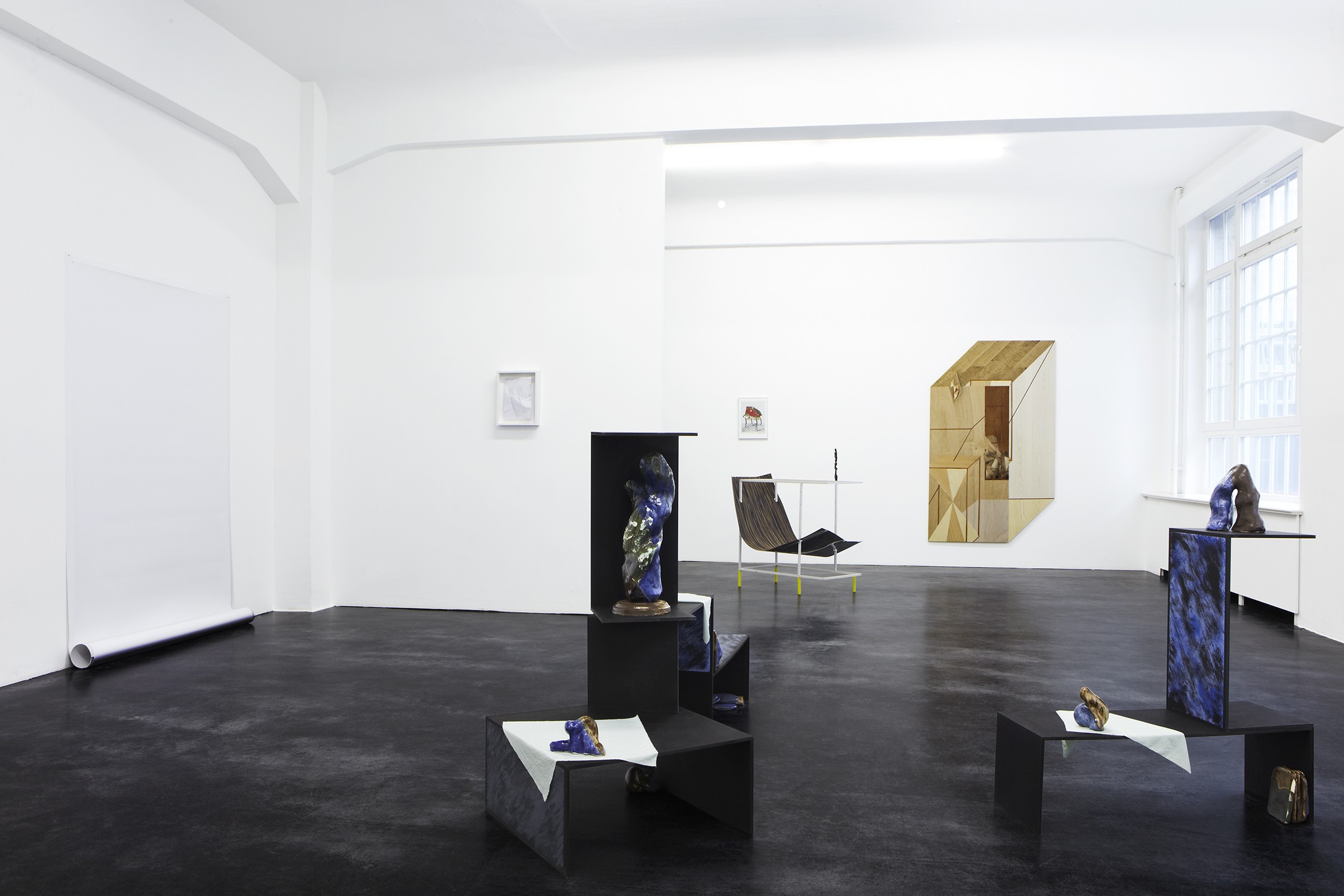
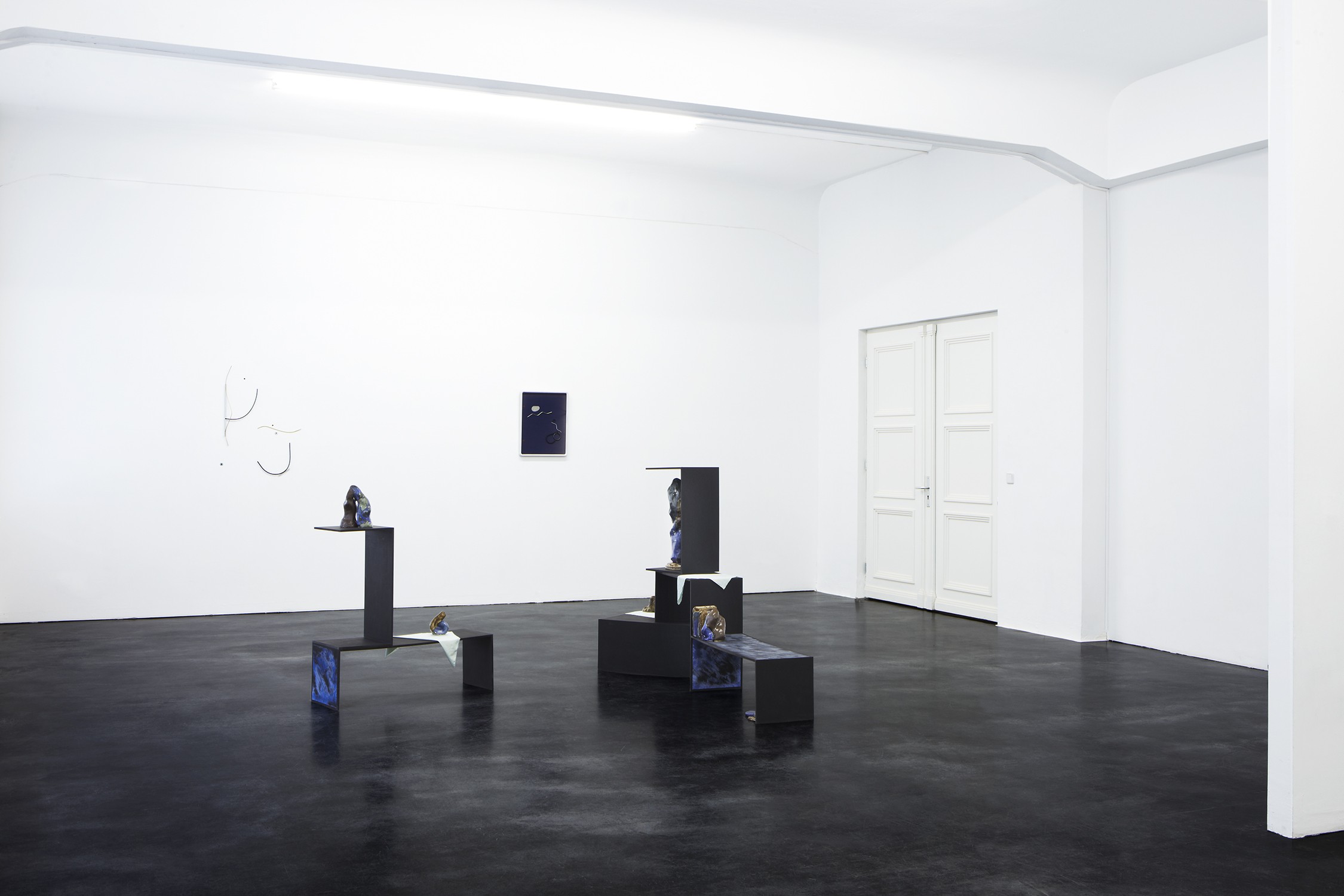
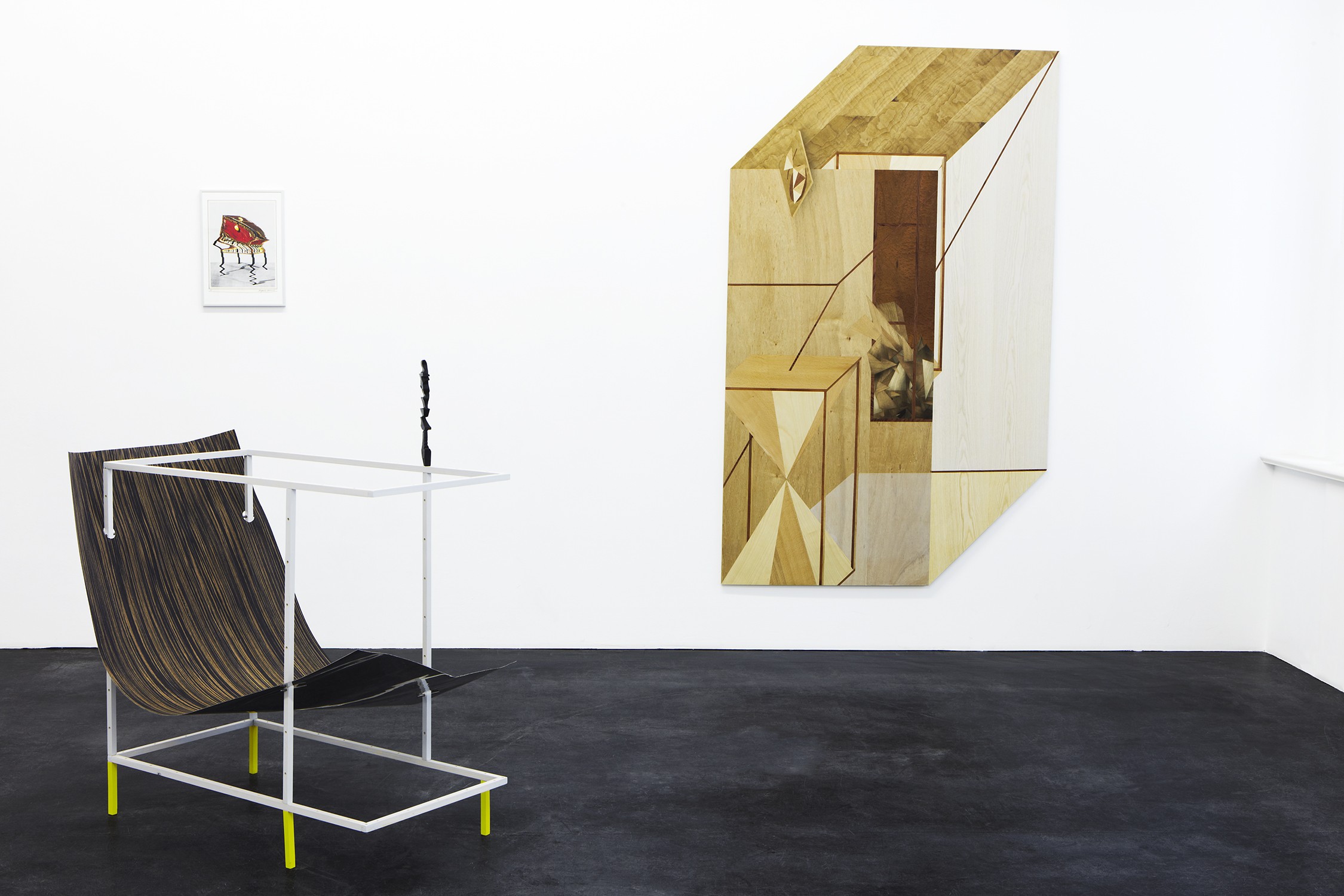
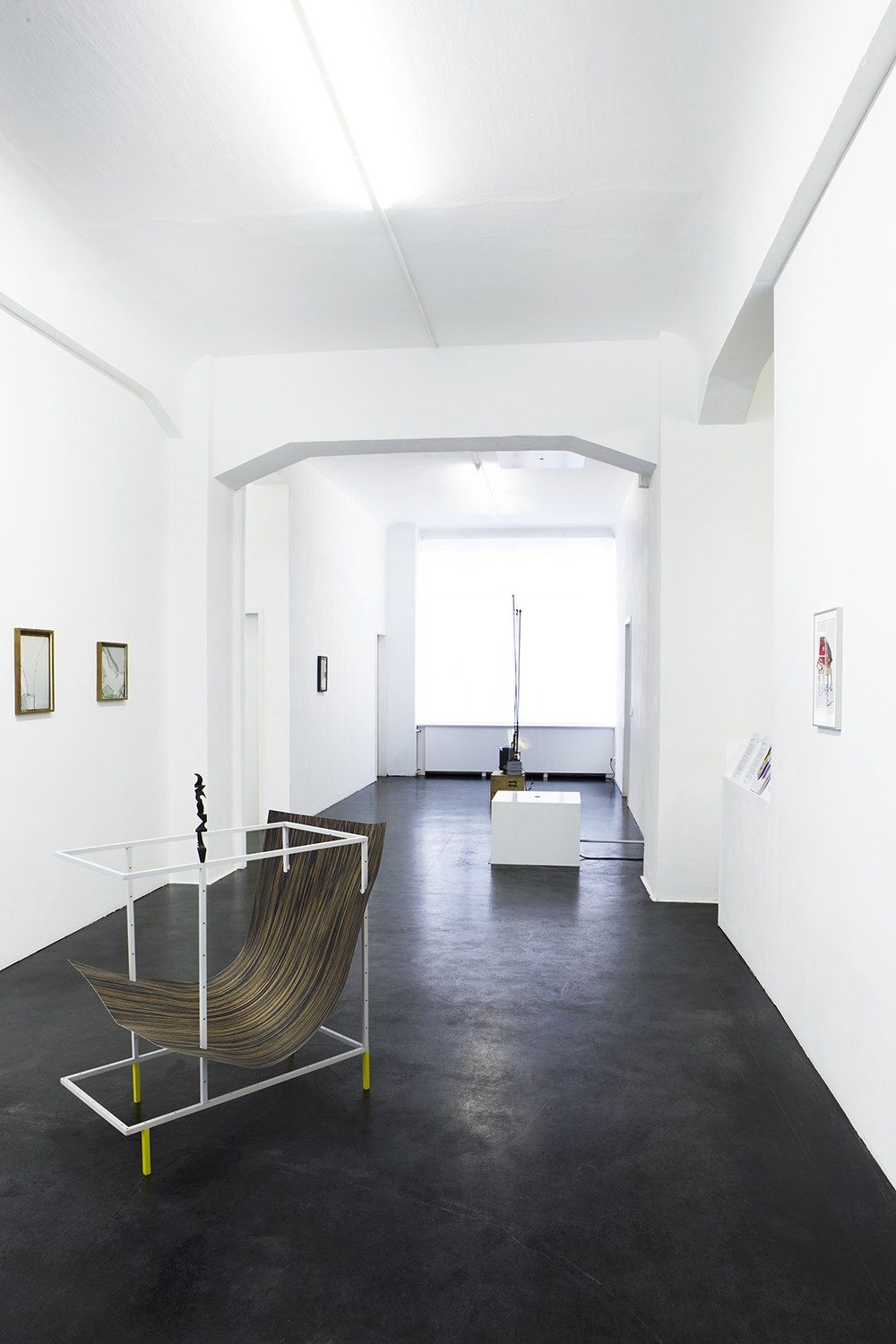

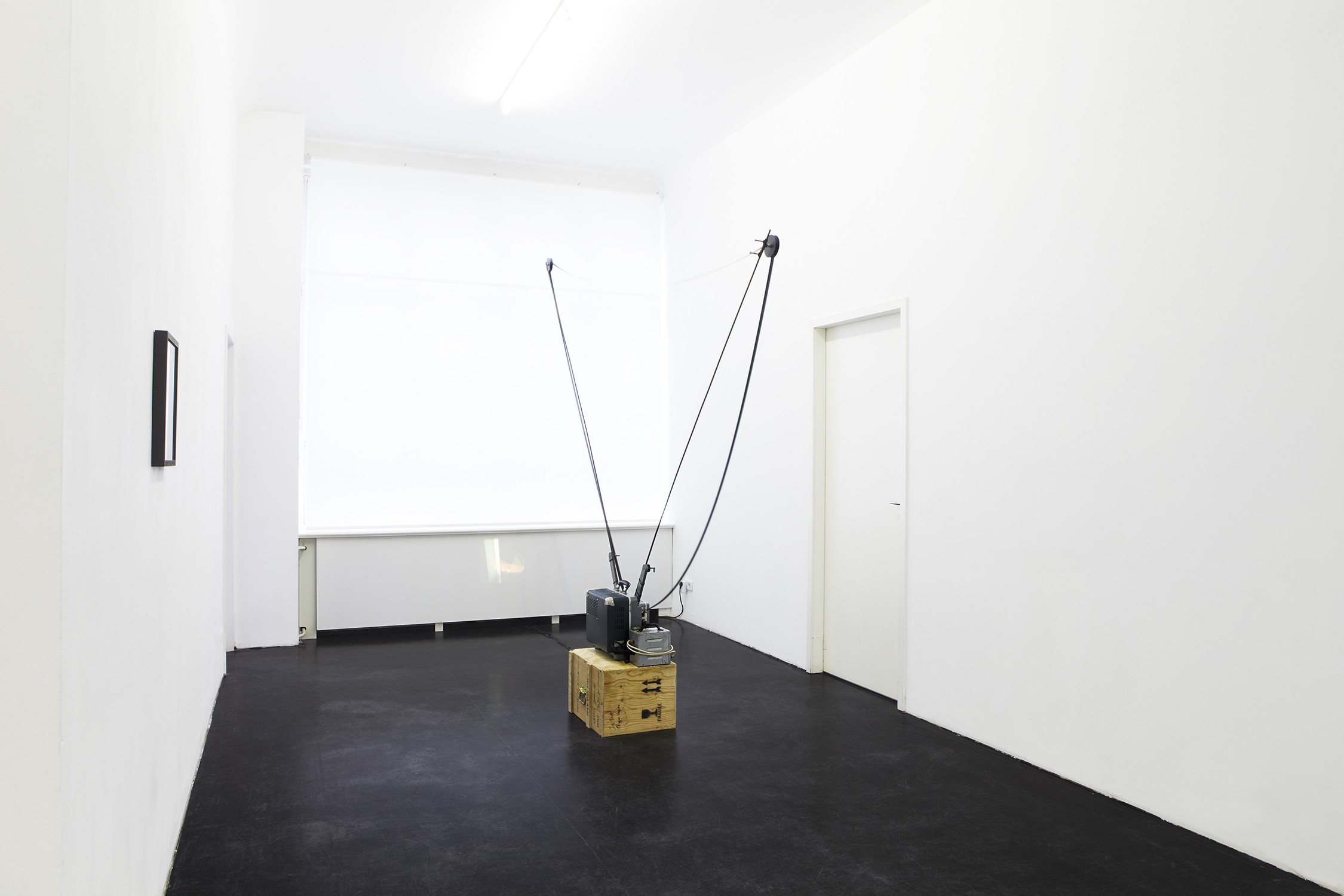
The Galerie alexander levy is very pleased to be able to present works from six artists with the Group Show II exhibit.
With the Group Show exhibit series, the Galerie alexander levy each year presents young artists who have drawn attention due to their special positions.
Benjamin Bronni (*1985 in Nürtingen) is distinguished by strongly structured paintings and sculptures that appear to follow a particular geometry. They are abstract, but contain forms that simultaneously awaken memories in our subconscious. Bronni used OSB (engineered wood boards) as canvas for many of his works or as a medium for sculptures. This is a material that contradicts a clear, sharp-edged geometry and presents a stark contrast to the perfected design of Bronni. The wall work Atelierbesuch (Studio Visit) (2012) reflects a new approach, in which Bronni works with wood veneer and, through precise composition, creates pictorial worlds that enable a three-dimensional realm of experience with the two-dimensional material. Everyday material becomes a new, abstract pictorial world, in which we can lose ourselves.
With her works, Ekaterina Burlyga (*1985 Alusta / Crimea) grapples in greater depth with the political circumstances of inequality in international relations, as well as with references in the subcultures of the Berlin night life.
For the exhibit, Burlyga has created a circuit that flows through the gallery. A delicate thread extends from the ceiling to the floor of the gallery. This thread, which doesn’t break off, consists of used oil. It appears to be endless and is pumped mechanically from the floor to the ceiling, where it is left to the forces of gravity. With this installation, Burlyga creates a black line in the room, the presence of which, and its properties, have a disconcerting effect.
The viewer finds himself in an area of tension between aesthetic and political interpretation.
One could call James Clarkson (*1987 in Liverpool) a collector. Clarkson is always on the lookout for objects and materials from which he can create images, sculptures and installations. With his compositions, Clarkson makes reference to modernity, not exclusively to art, but rather also to design. The aesthetic parallels to painting formed by his compositions of arranged found objects are of special interest to him in the process. The works found in the exhibit are both entirely made of found objects. Arranged steel rods, rubber insulation and buttons approach painting closely. Thus, Clarkson interprets a bent metal rod like a gracefully drawn line.
In Ari Sariannidis’ (*1986 in Berlin) cabinet of art adaptations, one searches futilely for nautilus shells, ostrich eggs, coral branches and rhinoceros horns in valuably processed mountings. The artistic forms of the presentation, ordering and categorisation of objects can look back on a century-old tradition. The form of presentation as cabinets of wonder or art was and remains very personal, a reflection of its time.
The artist describes it for us as follows: “Greek vase, roemer wine glass, in red, yellow and ochre-brown. A chocolate girl on the wall. Cheap reproduction, beautiful old wall cabinet, even with a flush-mounted mini bar. Advocaat with the affiliated cocoa cups are also there, of course. Another Greek bust and a bunch of Meissen porcelain. Kind of a nice colour combination, the way it all fits together. Ask me whether that has a structure. Is that meant to be so, or is it maybe right just like that?” Sariannidis’ newest installation reflects this independent form of presentation and demonstrates the references and allusions he creates through the amalgamation of things.
Sinta Werner (*1977 in Hattingen) questions our perception of reality with her collages, installations and objects. The works play with the perception of the viewer and can first be experienced in their complete scope at second glance. In the process, Werner places emphasis on small, previously unnoticed things, for example, with the new work Zerknülltes Papier (Crumpled paper) (2013).
The work shows an empty, crumpled A4 sheet of paper. Only when looked at more closely does it become apparent that this is an object, an object made of many layers of stacked paper, which recreates the form of a crumpled sheet of paper. The entirely desultoriness and carelessness associated with crumpling takes on a very special quality through the painstaking dissection and reproduction. One is astonished at the variety of the possible kinks and the sophistication of the form, which follows mathematical rules and natural laws. Another work presents a piece of paper hanging on the wall, which is also empty and ends in a roll on the floor. The paper contains an image of itself. The paper provides the frame for itself; it is simultaneously the motif and the image carrier. The reproduction on itself takes place in a subtle dislocation, as if an error had occurred during the attempt at dividing and analysing.
Johannes Vogl (*1981 in Kaufbeuren) is an attentive observer of our time. His works are influenced by personal experiences and moments. Vogl expresses his to some extent poetic view of life with his works. In his work Das Brot (Bread) (2009), an animated 16 mm film, he shows us a slice of bread and jam in the process of falling, in an endless loop. In metaphorical terms, the question of chance is being dealt with here – on which side will it land, yes or no – a fundamental question is visualised and makes us nervous, because we will never know the answer.
With the work Sommer (Summer) (2009), he manages to retroactively make a season abstractly experienceable for us and transform it into a static state. To this purpose, a painting made of flypaper hangs in his studio and catches insects as proxies for the summer in his environment. Vogl thus only creates the basic conditions for this painting and then leaves it to its own devices. Coincidence, which can be a large component of life, is thus visualised for us in a poetic fashion.